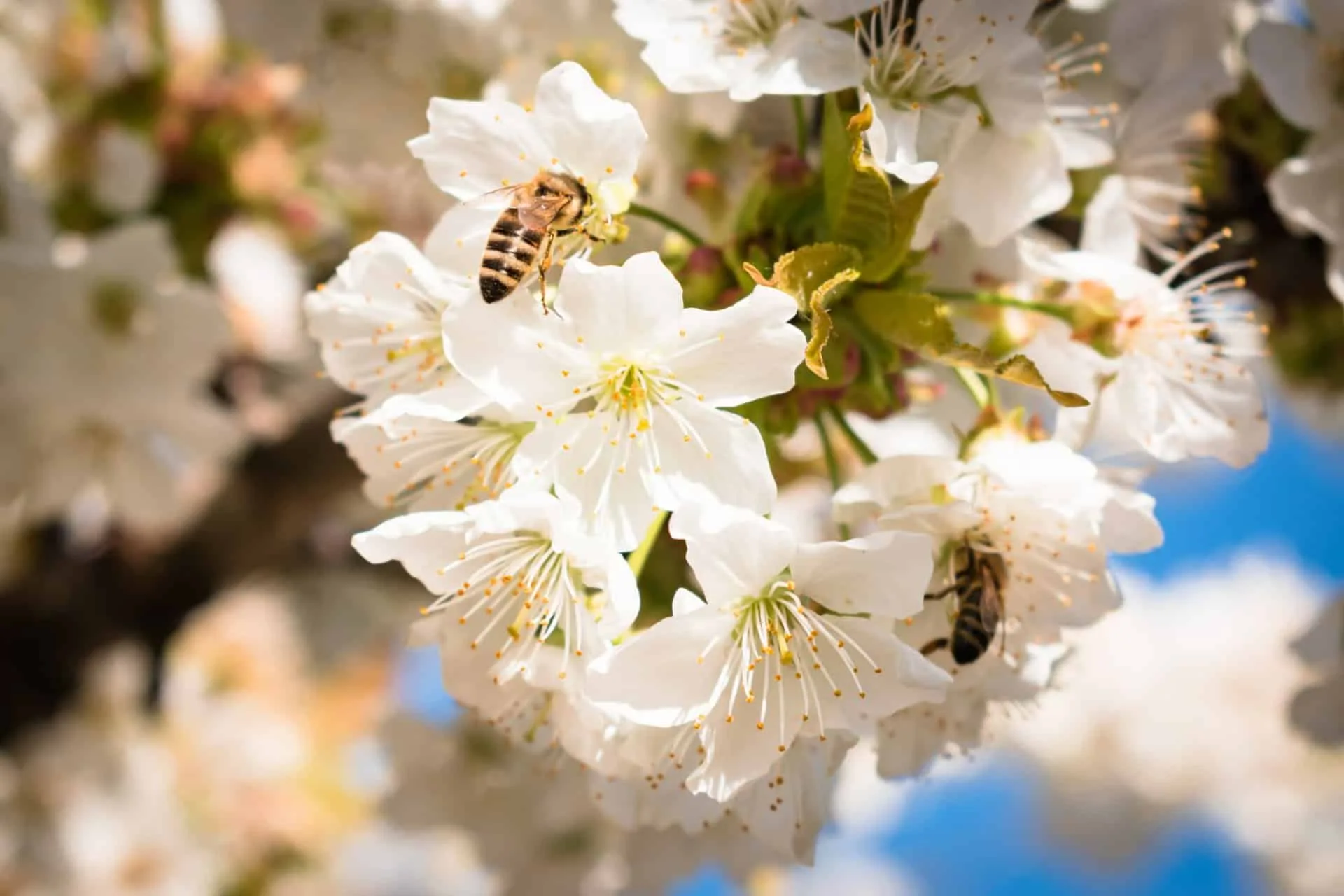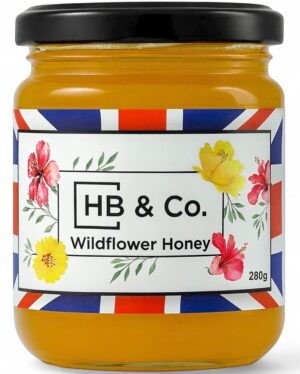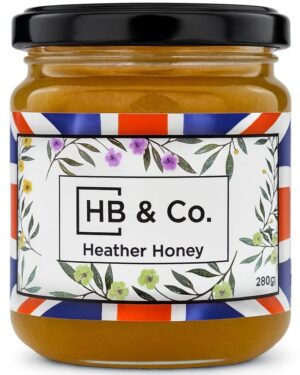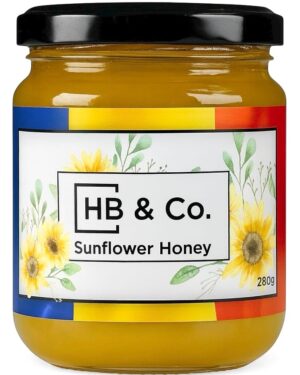British Soft Set Honey
British Soft Set Honey
Every 280g jar of Soft Set Honey is 100% pure and raw, produced using traditional methods of beekeepers. Sustainably harvested and packed in recyclable glass jars, our Soft Set Honey captures the simple pleasure of nature, straight from hive to home.
Flavour Notes:
Delicate, floral, and buttery with a smooth finish.
Best For:
Spreading on toast, stirring into porridge, or baking.
Ingredients:
100% pure British wildflower honey.
£10.99 — or subscribe and save 20%
Related products
Just opened my first jar of 3 which happened to be the Acacia honey….DELICIOUS…. bears no resemblance to cheap Supermarket honey…..well pleased…!😋
SALSA Certification for our British Honey Supplier

Our British honey supplier holds the prestigious Salsa Certification, a robust and effective food safety certification scheme tailored for smaller food producers and suppliers.
This certification attests that they adhere to industry-recognized standards that surpass the minimum requirements set by regulatory authorities.
To achieve SALSA approval, suppliers must demonstrate to auditors that they consistently produce and supply safe and legal food, and are committed to upholding the stringent SALSA standard. Founded as a non-profit venture by three major trade associations in the UK Food Chain, SALSA is overseen by the Institute of Food Science and Technology (IFST).
Their purpose is to offer affordable food safety assurance certification and support for small and micro businesses in the United Kingdom. Embodying values like prioritizing safe food practices, affordability, building supportive relationships, offering practical guidance, and promoting teamwork and collaboration, SALSA is instrumental in maintaining high-quality food safety standards in the industry.
Soft Set Honey: A Delicious Symphony of Creamed, Seed, Runny, and Delicious Honey
Introducing our British Soft Set Honey, a delightful new addition to the HoneyBee & co family. This exquisite honey is proudly produced in the heart of the Midlands, a region renowned for its lush landscapes, fertile soils, and diverse flora.
Our British Soft Set Honey is a testament to the rich biodiversity of the region. The honey is derived from the nectar of a variety of local flowers, each contributing to its unique flavour profile. From the delicate sweetness of springtime bluebells to the robust richness of summer wildflowers, every spoonful captures the essence of the Midlands’ changing seasons. Soft set honey can have distinct variations such as spring set, summer set, and ivy honey, each offering a unique taste experience.
The honey is processed using a method known as ‘controlled crystallisation’, resulting in a soft set of honey crystals that boasts a smooth, creamy texture. This makes it perfect for spreading on toast, stirring into yoghurt, or simply enjoying straight from the jar. Despite its soft, buttery consistency, it retains all the natural sweetness and floral notes of traditional honey. Additionally, soft-set honey maintains a stable, creamy consistency over time, making it easier to spread or serve without drips.
Our bees are lovingly tended to by experienced beekeepers who are passionate about preserving the natural beauty of the Midlands. They ensure that the bees are healthy and that their hives are sustainably managed, resulting in a product that is as ethical as it is delicious.
When you purchase our Midlands Blossom Soft Set Honey, you’re not just getting a jar of honey. You’re getting a taste of the British Midlands, with its vibrant landscapes and diverse flora. You’re supporting local bee populations and sustainable farming practices. And most importantly, you’re choosing a product that has been made with care, passion, and respect for nature.
Experience the taste of spring in the Midlands with HoneyBee & Co.’s British Soft Set Honey. It’s more than just honey - it’s a celebration of the British countryside in every jar.
Our soft set honey is carefully packaged in jars to preserve its creamy texture and freshness.

What is Soft Set Honey?
Soft set honey, also known as creamed honey, is a type of honey that has been processed in a specific way to control crystallisation. This results in a cream of honey that has a smooth, creamy texture and is easy to spread, similar to butter or margarine. The controlled crystallisation process also helps retain beneficial enzymes, vitamins, and antioxidants, preserving the natural goodness of liquid honey. Mixing high glucose honey can help in making soft set honey, as it encourages the formation of fine crystals that contribute to its smooth texture.
Honey naturally contains glucose and fructose. Over time, the glucose in honey can spontaneously crystallise, leading to a coarse, grainy texture. This is a natural process and does not affect the quality or taste of the honey. However, some people prefer the smooth texture of soft-set honey. Glucose is less soluble than fructose and causes honey to granulate, which is why it plays a key role in the crystallisation process. The optimum temperature for granulation to occur is between 13-15 degrees Celsius, making it an important factor in the production of soft set honey.
To make soft set honey, beekeepers use a process called “controlled crystallisation”. This involves gently applying heat to the honey to melt and dissolve any existing glucose crystals, then adding a small amount of “seed” honey that contains fine glucose crystals. The honey is then cooled slowly, allowing the glucose to crystallise in a controlled manner. After cooling, the honey is stirred gently to distribute the seed crystals evenly and achieve the desired creamy texture. Stirring seeded honey frequently is essential to distribute the seed evenly and ensure a consistent texture. Gentle stirring is important to avoid frosting, which can affect the appearance and consistency of the honey. If frosting or bubbles appear, beekeepers may stir the honey to restore a smooth texture. Soft set honey needs about 10% of a suitable seed stock to ensure even crystallisation.
Soft set honey is perfect for spreading on toast, stirring into yoghurt, or using in any recipe where you want smooth, spreadable honey. It has the same sweet, floral flavour as regular honey, but with a unique texture that many people enjoy. Common uses for soft-set honey include spreading on toast, crumpets, bagels, and pancakes, as well as sweetening drinks and porridge, making it a versatile addition to any kitchen.

Types of Honey
The world of honey is as rich and varied as the landscapes that produce it. From the creamy smoothness of soft set honey to the golden clarity of liquid honey, each type offers its own unique experience for the senses. Let’s explore the different honeys you might find in your kitchen or at your local market, and what makes each one so special.
Creamed Honey & Soft Set Honey:
Creamed honey, often called soft set honey, is beloved for its buttery, spreadable texture. This honey is carefully stirred sometimes with a honey creamer, sometimes by hand to break down larger crystals and encourage the formation of tiny, uniform ones. The result is a jar of honey that’s smooth, creamy, and perfect for spreading on warm toast or stirring into porridge. If you’re curious about making your own soft set honey, you can use a small amount of seed honey from your first batch to guide the crystallisation in future batches, ensuring a consistently lovely texture. The standard method for making soft-set honey, called seeding, was patented by E.J. Dyce in the 1930s.
Crystallised Honey:Crystallised honey is simply honey that has naturally formed crystals over time. While some see this as a sign that something’s gone wrong, it’s actually a mark of pure, unprocessed honey. The composition of the honey especially the ratio of fructose to glucose determines how quickly it crystallises. Rapeseed honey, for example, is known for its rapid crystallisation and strong flavour, making it a favourite for those who enjoy a firmer, more textured honey.
Liquid Honey:Liquid honey is the classic runny honey that pours easily from the jar. It’s typically extracted and jarred soon after the bees produce it, before any crystals have a chance to form. This makes it ideal for drizzling over yogurt, mixing into drinks, or using in recipes where a free-flowing sweetness is desired. Summer honey, produced during the warmer months, often has a lighter colour and a delicate, floral flavour, capturing the essence of the season in every spoonful.
The Art of Making Soft Set Honey:Making soft set honey is both a science and an art. Beekeepers carefully control the temperature and humidity during extraction and jarring, using equipment like warming cabinets and honey creamers to achieve the perfect consistency. Stirring is done gently to avoid introducing air, which can lead to frosting; a white, streaky appearance on the surface of the honey. The process requires patience, as the honey must be cooled and stirred over several weeks to develop its signature creamy texture.
Factors Influencing Honey’s Texture and Flavour:Every jar of honey is a reflection of the bees’ hard work and the flowers they visit. The nectar source, the season, and even the weather can influence the taste, smell, and texture of the honey. Some honeys are mild and sweet, while others are bold and complex. The addition of pollen or a mix of different honeys can further enhance the nutritional value and flavour profile.
Beekeeper Expertise and Equipment:Producing high-quality honey is a meticulous process. From the careful extraction of honey from the comb to the precise jarring and storage, every step matters. The right equipment, whether it’s a sturdy stand for the honey bucket, a reliable tap for jarring, or a gentle spoon for stirring, can make all the difference in preserving the honey’s natural goodness.
Why Consumers Love Soft Set Honey:Soft set honey has become a favourite among honey lovers for its spreadable, creamy consistency and delicious flavour. It’s a versatile addition to any kitchen, perfect for topping toast, swirling into yogurt, or adding a touch of sweetness to your morning porridge. Its popularity continues to grow, with many preferring its smooth texture over traditional liquid or crystallised honeys.
The Wonderful World of Honey Production:Behind every jar of soft set honey is a story of dedication, patience, and a deep respect for nature. From the first batch of seed honey to the final jarring, beekeepers work tirelessly to produce honeys that delight the tongue and nourish the body. Whether you prefer the free flow of liquid honey or the creamy richness of soft set, there’s a world of flavour waiting to be explored in every spoonful.
In the end, the true goodness of honey lies in its diversity, each type offering a unique taste of the world around us, lovingly produced and carefully preserved for you to enjoy.
What is the meaning of a soft set?
The term "soft set" is often used in cooking and food preparation to describe a consistency that is firm yet still soft to the touch. It is typically used in the context of items like jellies, jams, custards, or honey, as you mentioned earlier.
For example, when making jam, a "soft set" refers to a jam that is not as firm as a traditional jam. It will still hold its shape, but it will be softer and spread more easily.
In the context of making soft set honey, it refers to the controlled crystallisation process that results in a honey that is firm enough to hold its shape, but soft enough to spread easily. The honey is not liquid, but it's not hard either - it's somewhere in between, hence the term "soft set".

Making Soft Set Honey
Making soft set honey, also known as creamed honey, is a rewarding process that transforms ordinary liquid honey into a delightfully smooth and spreadable treat. The journey begins with a batch of high-quality liquid honey, ideally sourced from trusted beekeepers who care for their bees and harvest honey at its peak freshness. The natural balance of fructose and glucose in the honey is key this delicate composition determines how well the honey will set and how creamy the final texture will be.
To start making soft set honey, the liquid honey is gently warmed just enough to dissolve any existing crystals, ensuring a perfectly smooth base. It’s important not to overheat, as preserving the honey’s natural enzymes and delicate flavours is essential. Once the honey is clear and liquid, a small amount of seed honey already creamed and with a fine, soft texture is added to the batch. This seed acts as a guide, encouraging the rest of the honey to crystallise in the same smooth, uniform way.
The mixture is then stirred slowly and steadily, either by hand or with a honey creamer, to evenly distribute the seed throughout the liquid honey. This careful stirring is what gives soft set honey its signature consistency creamy, soft, and easy to spread. The honey is then left to rest at a cool, stable temperature, allowing the controlled crystallisation process to work its magic over the course of several days or weeks.
Throughout the process, attention to detail is crucial. Beekeepers monitor the batch closely, ensuring the texture remains soft and the consistency is just right. The result is a jar of creamed honey that’s not only delicious but also a testament to the skill and care that goes into making soft set honey. Whether you’re spreading it on warm toast or enjoying it by the spoonful, each taste is a celebration of the bees’ hard work and the natural goodness of honey.
Which is better set or runny honey?
The choice between set (or soft set) honey and runny honey is largely a matter of personal preference, as both types have their own unique characteristics and uses. Here are some factors to consider:
- Texture: Set honey has a smooth, creamy texture that’s easy to spread, making it a lovely choice for toast, sandwiches, or any other dish where you want a spreadable sweetener. Runny honey, on the other hand, is liquid and pours easily, which can be preferable for drizzling over desserts, mixing into drinks, or using in certain recipes.
- Flavour: Both set and runny honey have the same sweet, floral flavour, although some people find that the creamy texture of set honey enhances the flavour slightly.
- Crystallization: All honey will naturally crystallize over time, which can change its texture. Runny honey can become grainy as it crystallizes, while set honey is already crystallized in a controlled way to create a smooth texture. If you don’t like the texture of crystallized honey, you might prefer set honey. Winter's lower temperatures can accelerate the setting process, making it easier to produce soft set honey during colder months. If honey becomes too hard, it can be gently warmed using hot water to restore its spreadable consistency.
- Storage: Regular honey can ferment if it’s not stored properly, while the crystallization process makes set honey more stable and gives it a longer shelf life. Storing honey in a cool place helps maintain its texture and prevents unwanted crystallization or fermentation. The long shelf life of soft set honey also makes it easy for beekeepers to sell it without concern for rapid spoilage.
- Versatility: Both types of honey can be used in a variety of ways, from sweetening tea or coffee to baking and cooking. The best type to use will depend on what you’re making.
In conclusion, neither type of honey is inherently “better” than the other. It all depends on your personal preferences and how you plan to use all the honey together.
At HoneyBee & co, we take pride in our cold-extracted local honey, a product that truly embodies the essence of our region’s rich biodiversity. Cold extraction is a meticulous process that ensures the honey is as close to its natural state as possible, preserving all the beneficial enzymes, pollen, aromatic compounds, and other natural elements that give honey its unique flavour and health benefits.
This method allows us to capture the distinct flavours and aromas of the local flowers from which the nectar is sourced, resulting in a honey that is not only delicious but also a true reflection of our local environment. When you choose our cold-extracted local honey, you’re choosing a product that is pure, natural, and brimming with the tastes and textures of our beautiful region.
What are the properties of a Soft Set Honey?
Soft set honey, also known as creamed honey, has several distinct properties that set it apart from other forms of honey:
- Texture: The most noticeable property of soft set honey is its lovely texture. It has a smooth, creamy consistency that is easy to spread. This is due to the controlled crystallization process, which results in fine, uniform crystals. During production, the honey is stirred to achieve this smooth, creamy consistency.
- Colour: Soft set honey is often lighter in colour than liquid honey. The crystallization process can give it a pale, almost white colour, although the exact shade can vary depending on the type of honey used.
- Taste: The taste of soft set honey is the same as that of the original liquid honey. However, some people report that the creamed honey texture enhances the honey’s natural flavours.
Bee on a flower
4. Stability: Soft-set honey is very stable and has a long shelf life. The crystallisation process prevents fermentation, a common problem with liquid honey.
5. Temperature Sensitivity: Soft-set honey is sensitive to temperature. If it is stored in a warm environment, it can return to its liquid state. Conversely, if it is stored in a very cold environment, such as during winter, it can become too hard. If this happens, you can gently soften the honey by placing the jar in hot water for a short period. It is best stored at room temperature.
6. Spreadability: One of the main advantages of soft-set honey is its spreadability. It can be easily spread on bread or other foods without dripping or making a mess with the jar.
7. Versatility: Soft set honey can be used in the same ways as liquid honey. It is great for sweetening tea or coffee, baking, cooking, or simply eating with a spoonful. However, its unique texture makes it particularly good for spreading on toast or stirring into yoghurt or oatmeal.
Your Questions Answered
No. HoneyBee & co Honey is Raw Honey. Exactly how bees have made it.
No. Our Acacia Honey is produced in pure and uncontaminated natural areas and our bees are not treated with antibiotics.
Our Acacia Honey contains an Optimal water percentage between 15% and 19%. Cheap supermarket honey can have up to 50% water. This is due to either beekeeper feeding bees water with artificial sugar or they collect the honey to quickly to increase profit margins.
Nectar is a liquid secretion of flowers that bees gather. They then take out much of its water content and after adding several enzymes they produce the golden substance we call honey.
Consuming honey rather than sugar has obvious advantages. The supply to the body of energy in the form of glucose and fructose, simple sugars that do not require any digestive process. Honey also contains Vitamins and other useful enzymes.
Raw Honey is a product with many calories; approximately 320 kcal for 100g. Moderation is the key if one has a particular diet. The positive fact about honey is its sweetness. One teaspoon of honey weighs about 7g and its more than enough to sweeten your favourite cup of tea.
Raw Honey is safe and it provides many health benefits, nevertheless, it should not be cooked raw over 40 degrees. When cooked, honey becomes similar to glue and thus produces toxins. Honey's raw form is the one detaining all its main benefits and properties. By altering its chemical composition by heating or overheating the honey It may completely change its compounds leading to health hazards. Honey also contains bacteria that can harm a young baby’s intestine. To this end avoid giving honey to babies under 12 months old.
Our bees are from the Apis Mellifera from the Apidae family.
Our honey is produced on the European Continent. Our long-term goal is to partner with small beekeepers from all over the UK and Europe providing our customers with quality honey while helping increase the European bee population.
Acacia Honey Stimulates digestion cleans the liver, regulates intestinal transit. Improves heart activity and circulatory system. Helps to restore the body after effort. Stimulates the immune system. The number of red blood cells increases.
Honey is a healthier alternative to sugar, especially for diabetics. It has antioxidants that help reduce the risk of heart attacks, strokes, and some types of cancer. It lowers blood pressure and improves cholesterol values. Honey is great for healing wounds and burns.
Honey is a great solution for coughs both for children and adults.





